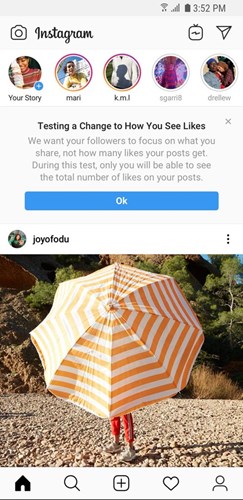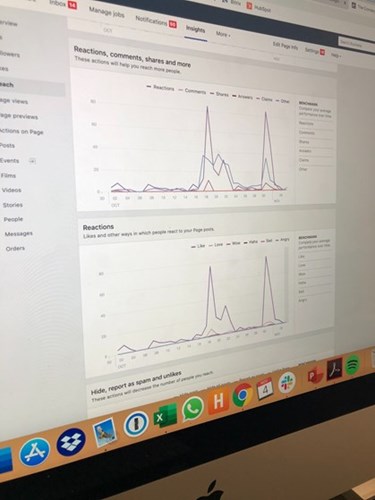In what was considered a controversial moment for the influencer industry, Instagram announced that it would be expanding its hidden like count test to users globally. In this post, we’ll look at what this means for brands, why you shouldn’t be worried and what metrics you should be tracking instead.
In a statement on Twitter, the platform said:
‘While the feedback from early testing in Australia, Canada, Brazil, Ireland, Italy, Japan and New Zealand has been positive, this is a fundamental change to Instagram, and so we’re continuing our test to learn more from our global community.’

The social media platform has made it clear there is a focus is on mental health and well-being of users. Instagram is under growing pressure to make the app a safer and less intimidating space, especially for younger users. The hope is that with the pressure taken off to gain ‘enough’ likes, users will be less likely to compare their content to others and share more frequently as a result.
It’s not the first move by Instagram towards changing how users interact with content. Recently, the following tab was removed, a featured which allowed users to see other people’s activity on the platform.
Earlier this year, Facebook had been considering hiding the like function on posts. Again, this move was said to be aimed at ‘protecting users from envy and dissuade them from self-censorship.’
So, what does this mean for brands?
In short, if you’re already measuring the metrics that are important: nothing.
Many companies use the platform to successfully market their products and engage with their audience. The panic around the importance of social media likes shows the dominance of vanity metrics as a common measure of success. Vanity metrics includes data such as like counts, follower numbers and page views.
How many ‘likes’ a post gets isn’t the most important part of your social media strategy or competitor analysis. It’s important to ask yourself if the data you're measuring will give you actionable insights.
Although likes are indicative of reach and popularity, metrics such as engagement rates, bounce rates, shares and click-through rates are far more revealing. For example, click-through rate measures the success of your content by showing how many people took action.
Setting Goals
Before choosing which metrics to measure, you need to understand why you’re measuring them. Social media goals should always align with your wider business goals. Choose metrics that will show your performance against business objectives. Goal setting also gives you an insight into the value of your social media efforts, and whether your content is converting or generating leads.
Data-driven Advertising
By tracking the right metrics, you’ll gain valuable insights that can inform where you spend your advertising budget. Data driven ad campaigns ensure that you get the best possible return on your investment.

Working with Influencers
Boost your brand visibility by collaborating with influencers who are relevant in your industry. Rather than simply approaching the account with the most followers, ask them for the metrics that will be most valuable to your campaign. For example, what are their audience demographics? Do they have a good engagement rate?
Social media’s ability to reach wider audiences in a targeted and engaging way has encouraged many brands to embed it into their overall digital marketing strategy, alongside SEO and PPC.
As Instagram and other social media platforms continue to make changes, staying up to date and knowing how to measure ROI on social media is vital for businesses.
Contact
Yellowphin Ltd
Unit 6, Blackpool Technology Management Centre
Faraday Way
Blackpool
FY2 0JW
0115 932 5151
About Us
What we do
Accreditations





